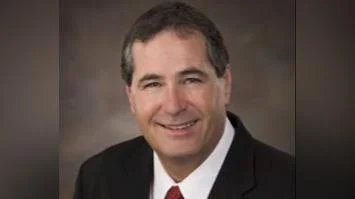Governor Doug Burgum, Former North Dakota Governor | x.com
Governor Doug Burgum, Former North Dakota Governor | x.com
On this day in 2017, the North Dakota Joint Information Center announced that former Governor Doug Burgum's evacuation order cleared protesters from the Dakota Access Pipeline protest site. This development followed multiple fires and injuries to two children due to explosions. The announcement was made in a press release on February 22.
According to the executive order, unseasonably warm temperatures in early 2017 caused rapid snowmelt in North Dakota, raising the risk of ice jams and flooding. Concerns grew over accumulated debris, including human waste, which threatened the Missouri River’s environment. The ongoing occupation of the area hindered cleanup efforts, prompting urgent action.
The BBC reports that as protesters vacated, they set around 20 fires, triggering two explosions that injured a 7-year-old boy and a 17-year-old girl. Both were hospitalized for burns. Authorities arrested at least ten protesters who refused to leave, while others left voluntarily or were transported to a state-run assistance center.
On February 22, 2017, authorities in North Dakota arrested ten protesters as they began clearing the main Dakota Access Pipeline protest camp following Burgum’s evacuation order. While most demonstrators left voluntarily, between 25 to 50 people remained in the evacuation zone. Law enforcement warned that anyone obstructing cleanup efforts would be arrested, according to the New York Times.
According to The Washington Times, after the February 2017 evacuation of the Dakota Access Pipeline protest camps, cleanup crews removed 48 million pounds of garbage and debris from the Oceti Sakowin site. The effort cost North Dakota taxpayers $1 million and aimed to prevent waste from polluting the Cannonball River during snowmelt. A Florida-based contractor hired by the U.S. Army Corps of Engineers worked alongside earlier cleanup efforts led by the Standing Rock Sioux Tribe.
The North Dakota Joint Information Center operates continuously, coordinating emergency communications and resources with more than 50 lead and support agencies, private businesses, and volunteer organizations to assist local jurisdictions in disaster and emergency response efforts.






 Alerts Sign-up
Alerts Sign-up